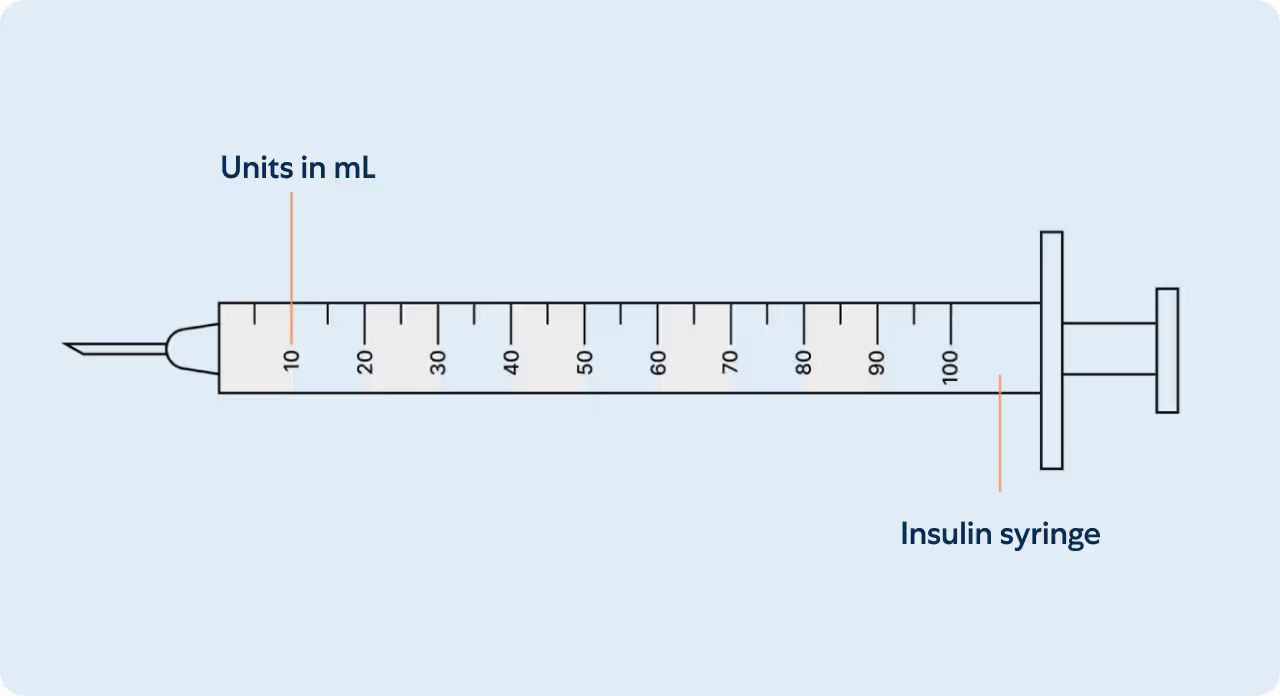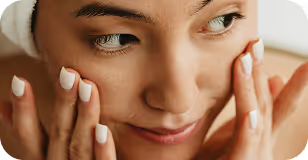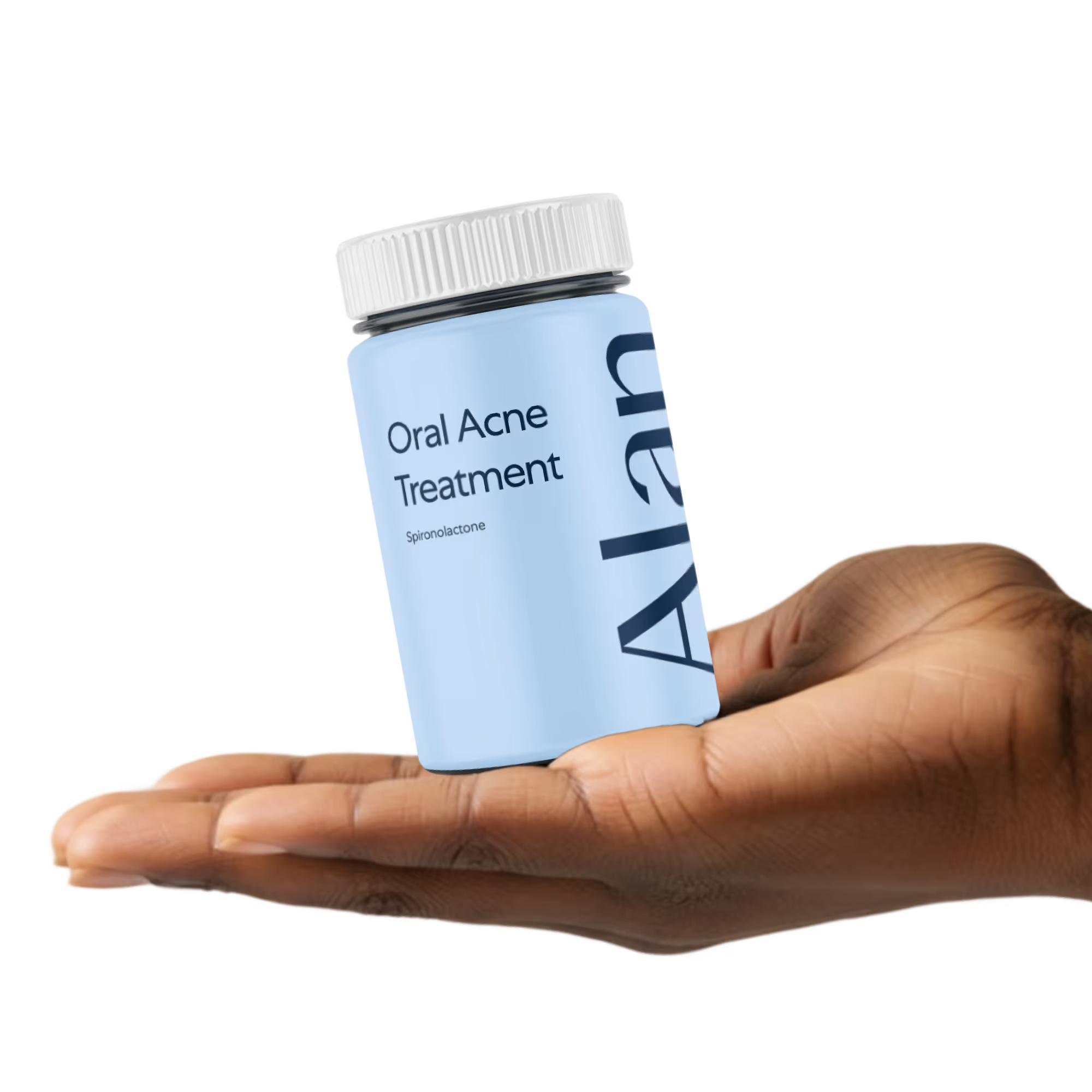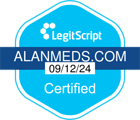Storage
Store at room temperature (59°F to 86°F / 15°C to 30°C). Keep the bottle tightly closed and away from moisture, heat, and direct sunlight.
Instructions
This information is intended for individuals who have been prescribed Oral Spironolactone by their Alan Health provider.
Spironolactone is an oral prescription medication used to treat hormonal acne in women. It works by reducing the effects of certain hormones that contribute to oil production and acne breakouts. Your provider will determine the appropriate strength and titration schedule based on your needs.
How to Take Oral Spironolactone:
- Take once daily, with or without food. Try to take it at the same time each day for best results.
- Do not skip doses. Consistency is key—results build gradually over time.
- Stay hydrated. Spironolactone is a mild diuretic, so drinking plenty of water can help prevent side effects.
- Use effective birth control. This medication is not safe during pregnancy.
- Continue your routine. You can use topical treatments like tretinoin or benzoyl peroxide alongside spironolactone, as directed by your provider.
Your provider will monitor your progress and adjust your plan if needed. Always follow their guidance and reach out with any questions.
Understanding your insulin syringe

Measuring your dose
Insulin syringes are used for subcutaneous injections. They are marked in Units on the insulin syringe barrel (see illustration). Insulin syringes facilitate the precise measurement of tiny amounts of liquids which are ideal for medications such as insulin that require small and accurate dosing. Unit marks are also expressed in mL’s and can be interchangeably referenced. A prescriber may write a prescription in Units or in mL’s.
Within the amount of liquid is the prescribed mg dosage of your medication (see mg chart). Milligrams (mg) is not an amount of liquid, but rather the amount of drug that is within. The conversion between units and milligrams varies depending on the concentration of the product being used.
What can I expect?
{{what-to-expect-oral-acne-treatment}}
Safety information
The most common side effects are increased urination, dizziness, menstrual irregularities, breast tenderness, and mild stomach upset.
In rare cases, side effects include elevated potassium levels (which may cause weakness or heart palpitations), rash or allergic reaction, and severe fatigue or leg cramps. Seek immediate medical care if these occur. A full list of side effects can be found here.
Do not use this product if you are currently pregnant, breastfeeding, or plan to become pregnant or breastfeed without consulting a qualified healthcare provider.
Note: The above statements have not been evaluated by the Food and Drug Administration. This product is not intended to diagnose, treat, cure, or prevent any disease.
Frequently Asked Questions
What is Oral Acne Treatment used for in skincare?
Oral Acne Treatment (Spironolactone) is a prescription oral medication primarily used to treat hormonal acne in women. It works by blocking androgens—hormones that can cause excess oil production and deep, cystic breakouts. Typically, your physician will start you on 50mg and, based on how you respond to the medication, titrate up to 100mg.
Who is Oral Acne Treatment best suited for?
It’s especially effective for adult women with hormonal acne, particularly those who experience breakouts along the jawline or chin, or who have flare-ups around their menstrual cycle or due to conditions like PCOS.
How long will it take to see results from Oral Acne Treatment for acne?
Most users begin noticing improvements between 8–12 weeks of daily use, with full results often seen after 4–6 months. Because spironolactone works gradually, consistency is key. Visit our Resource Center for more information on what to expect over time with oral spironolactone.
Will my acne get worse before it gets better?
Some people experience a brief “purging” phase during the first few weeks, where breakouts may temporarily increase as pores begin to clear. This typically resolves as the treatment starts working.
What are the potential side effects?
Common side effects may include increased urination, breast tenderness, or changes in menstrual cycles. Serious side effects are rare but should be reported to your provider right away.
Is Oral Acne Treatment safe for long-term use?
Yes. With appropriate monitoring by your provider, spironolactone can be used safely over the long term to manage hormonal acne.
Can I take Oral Acne Treatment with topical acne treatments?
Yes. Many patients combine spironolactone with topicals like tretinoin or benzoyl peroxide for enhanced results. Your provider can recommend the best regimen for your skin type.
What happens if I stop taking Oral Acne Treatment?
If you stop treatment, your hormonal acne may return over time. Always speak with your provider before making any changes to your medication plan.
Why is spironolactone typically prescribed only for women?
Spironolactone treats acne and hair concerns by blocking androgens. In men, this can lead to side effects like breast tenderness or lower testosterone, so it’s generally prescribed only for women.
Can I take Oral Acne Treatment if I’m pregnant or trying to conceive?
Spironolactone is not recommended during pregnancy or while trying to conceive. Be sure to inform your provider if you’re planning for pregnancy or not using contraception.
What if I miss a dose?
If you miss a dose, skip the missed dose and continue with your regular schedule. Do not double up to make up for a missed dose.
Additional support
For details about your medication and dosing, please log in to your patient portal. Your physician is here to help with any medical questions. If you are experiencing a medical emergency, call 911 right away.













